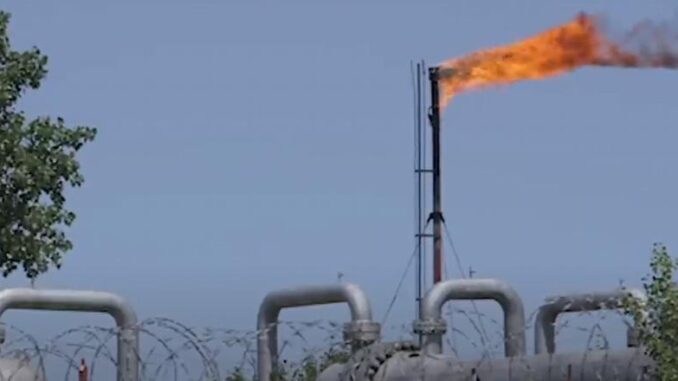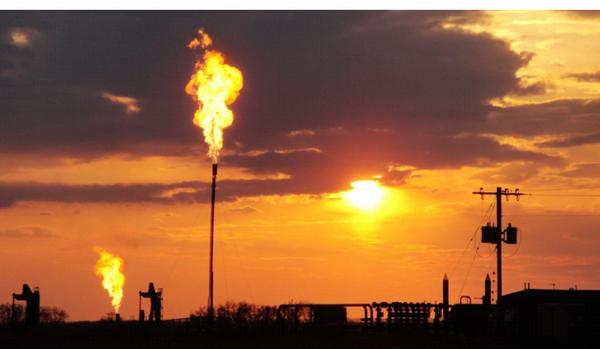
PARIS, France, May 12, 2025 (ENS) – Measures to tackle methane emissions are often cost-effective and could have brought an extra 100 billion cubic meters of gas to market in 2024, but now the International Energy Agency’s Global Tracker shows methane emissions from fossil fuels remain at high levels, finds the latest global tracking update. Even so, the IEA reports that efforts to bolster data collection and monitor methane leaks are making progress.
The IEA’s Global Methane Tracker 2025, released May 7, presents the worldwide agency’s latest emissions estimates, based on the most recent data from satellites and measurement campaigns. It examines different abatement options and their associated costs.
Methane is responsible for around 30 percent of the rise in global temperatures since the Industrial Revolution, and rapid and sustained reductions in methane emissions are key to limiting near-term global warming and improving air quality. Methane can trap around 80 times as much heat from the Sun as carbon dioxide, over a 20-year period, intensifying climate change.
The fossil fuel sector accounts for more than 35 percent of methane emissions from human activity today. Record global production of oil, gas and coal – along with limited mitigation efforts to date – have kept methane emissions from the energy sector worldwide above 120 million metric tons annually, according to the report.
The energy sector – including oil, natural gas, coal and bioenergy – has some of the best opportunities to cut methane emissions, the agency reports. The IEA considers the annually updated Global Methane Tracker to be an essential tool for raising awareness about methane emissions across the energy sector and about the opportunities to bring these emissions down.
This 2025 update adds new elements: country-level historical emissions data; an interactive tool to explore international methane initiatives; and estimates of emissions from abandoned fossil fuel facilities.
The update features a fully open-access model for exploring methane reduction pathways in the oil and gas industry. Methane reduction, known as abatement, is a crucial opportunity to reduce near-term global warming at a time when temperatures worldwide have set record highs for two years in a row.
“Tackling methane leaks and flaring offers a double dividend: it alleviates pressure on tight gas markets in many parts of the world, enhancing energy security – and lowers emissions at the same time,” said IEA Executive Director Fatih Birol.
“However, the latest data indicates that implementation on methane has continued to fall short of ambitions,” Birol said. “The IEA is working to ensure that governments and industry have the tools and knowledge they need to deliver on pledges and achieve the goals they have set.”
Methane Tracker Offers Historic Emissions Data
The 2025 update of the Global Methane Tracker adds several new elements, including country-level historical emissions data; an interactive tool to explore international methane initiatives; and estimates of emissions from abandoned fossil fuel facilities.
New analysis in this year’s Tracker found that abandoned oil and gas wells and coal mines together contributed around eight million metric tons to global methane emissions last year.
Taken together, these sources would be the world’s fourth-largest emitter of fossil fuel methane.

Around 70 percent of annual methane emissions from the energy sector could be avoided with existing technologies, according to the report. Meanwhile, a substantial share of abatement measures could pay for themselves within a year, since the gas that is captured can be resold.
The analysis finds a huge range in methane emissions intensities across different countries and companies, with the best outperforming the worst by a factor of 100.
Raising awareness and spreading readily available best practices are essential to narrow this gap, it notes.
A new analysis published in the IEA Tracker update shows that current methane pledges by companies and countries cover 80 percent of global oil and gas production.
Yet at the moment, only around five percent of global oil and gas output demonstrably meets a near-zero methane emissions standard.
The Tracker finds that addressing methane emissions and flaring would improve energy security by creating additional natural gas supply.
Methane abatement could have made around 100 billion cubic metres of natural gas available to markets in 2024, on par with Norway’s total gas exports.
A further 150 billion cubic metres of natural gas is flared globally each year, the majority of which is part of routine practices and can be avoided, the IEA reports.
Based on today’s policies, deploying targeted methane mitigation solutions in the fossil fuel sector would prevent a roughly 0.1 °C rise in global temperatures by 2050. This is comparable to eliminating all the carbon dioxide emissions from heavy industry worldwide.
Featured image: Flaring natural gas at oil fields wastes resources and pollutes the environment. For a community in Nigeria near this methane flaring site, the escaping gas harms their way of life. 2015 (Screengrab from video courtesy The World Bank)
© 2025, Environment News Service. All rights reserved. Content may be quoted only with proper attribution and a direct link to the original article. Full reproduction is prohibited.



